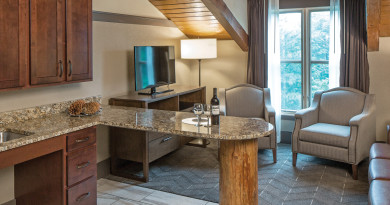Your Board: Does Everyone Have the Same Agenda?
In order for a board of directors to make a decision for a business, quite a few things need to happen. They need to ensure that what you’re doing will benefit the future of the business, they need to ensure the employees will be protected as much as possible by the change, and the directors all need to be on the same page. It’s important for the directors to listen to managers’ and employees opinions because they won’t want to stay with a resort where they don’t think they are heard about big decisions that are made. It’s good practice to give out an employee job satisfaction questionnaire before and after any changes to see how it has affected a business. The board may feel their choice was a good idea but employees may argue against this and cause issues for the resort. Every decision that impacts a resort goes through a board of directors, whether a resort has a professional management company or is self-managed – that’s who will vote on and make the final decision.
 So, what happens when members of that board have a personal agenda or their agenda and opinions aren’t matching up with the majority? Embrace it.
So, what happens when members of that board have a personal agenda or their agenda and opinions aren’t matching up with the majority? Embrace it.
At the core of the situation is the fact that the board is comprised of people, real life human beings, and all human beings have some sort of agenda. They all have different personal experiences, education and most importantly they all made the decision to join the board of directors for a specific reason.
According to Rick Bachman, Regional Director of Operations at Defender Resorts, a majority of the time those reasons are one of two things: they are not satisfied with the quality or they believe the dues are too high.
Whichever reason that they join for they also believe they know something or possess certain skills or experience that influence a positive impact or change. Once they are members of the board though many times the deeper understanding of the situation that they gain, by seeing what has been tried and worked or not worked their agenda and the way they plan on implementing it can change. Most likely though this different prospective will add something to the conversation. Maybe someone coming from a different agenda or perspective makes some great points and begins to implement change, maybe their suggestions don’t always make the cut, but at the end of all of it they have added to the conversation instead of just nodding their head in agreement and that’s a quality to embrace.
Now, exactly HOW do you embrace it?
The first thing that needs to be cementing into the minds of everyone participating in a board meeting is to accept the fact that board members each have their own opinions based on their own perspective and therefor are going to argue. One of the most important roles for a management company is to assist the presiding officer with staying on track. It is the responsibility of the presiding officer to firmly enforce that the meetings stay on point, follow the agenda and not let it get personal. If it goes personal, it will go sideways.
Assisting a presiding officer to stay on track, or for a presiding officer to keep the other members on track you must be respectful, yet somewhat firm. Remember everyone is there because they want their opinion to be heard, so gently, but firmly remind them of the agenda and the exact topic at hand.
When people begin to talk over one another it starts to become chit-chatty which ushers in chaos. Sometimes it is necessary to take a break and ask everyone to listen to the recording of the meeting and illustrate that when there is side bar discussions it is impossible to accurately dictate the minutes. Hence, the need for clear, one-at-a-time discussions.
“Everyone in a board meeting has an immense amount of life experiences and knowledge so we just want to tell, tell, tell, but for the good of the group, before everyone gets exhausted we have to limit the telling and focus the concentration on the actionable items,” said Frank Baker, Executive Vice President at Defender Resorts, who has more than 45 years’ experience participating in resort board meetings.
By focusing on the actionable items, the differences of opinion (if you have some) can be called to a motion. A strong presiding officer will not only call a motion, but keep it focused on the vote and not allow the discussion to sway off topic. As participants begin to sway off topic, bring them back and remind them that there is a motion on the floor.
A large part of being successful at this is clear communications. When a new board member is brought into the board, it is absolutely necessary to make sure they are well informed. For example, they should be provided with a new board member welcome packet that includes information from the last three years such as meeting minutes, financials and anything else pertaining to the resort and its operations. A board member cannot fully be present in the conversation if they are not fully prepared.
It is also helpful to assist board presidents by helping them master the art of controlling a meeting and keeping it on task. Some board presidents can do this better than others, and typically the difference is the experience.
Boards are often a group of people with different agendas working eventually towards the same agenda, the resort and the owners. By embracing and carefully managing the communications that happen in board meetings and decision making your board will arrive with the same agenda, just with a healthy, open debate to go alongside it.



